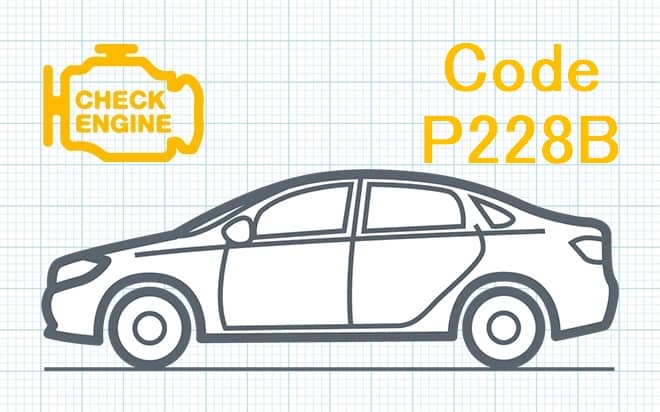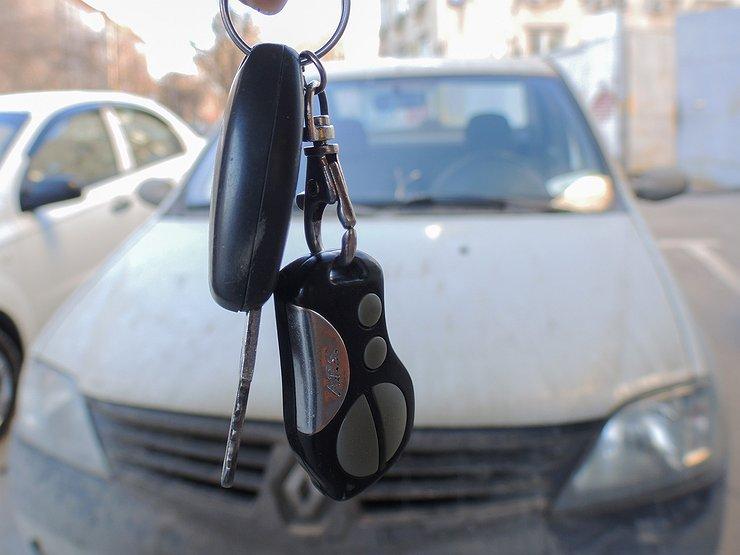
P228B Fuel pressure regulator 2 - forced engine shutdown
Content
- P228B Fuel pressure regulator 2 - forced engine shutdown
- OBD-II DTC Datasheet
- What does P228B mean?
- What is the severity of this DTC?
- What are some of the symptoms of the code?
- What are some of the common causes for the code?
- What are some steps to troubleshoot the P228B?
- Related DTC discussions
- Need more help with a P228B code?
P228B Fuel pressure regulator 2 - forced engine shutdown
OBD-II DTC Datasheet
Fuel pressure regulator 2 - forced engine shutdown
What does P228B mean?
This Diagnostic Trouble Code (DTC) is a generic transmission code and applies to many OBD-II vehicles (1996 and newer). This may include, but is not limited to, Volkswagen, GMC, Chevrolet, Cadillac, Ford, BMW, etc. Despite the general nature, the exact repair steps may vary depending on the model year, make, model and transmission configuration.
In my personal experience with P228B diagnostics, it has only been applied to diesel vehicles. It also meant that the powertrain control module (PCM) detected an excessive degree of fuel pressure in the electronic fuel pressure regulator, severe enough to warrant engine shutdown.
The regulator in question was designated number 2. In systems that use multiple electronic fuel pressure regulators, a numeric designation is often used. The number 2 can also refer to a specific engine block. Check the manufacturer's specifications for the vehicle in question. High pressure diesel injection systems must be serviced by qualified personnel ONLY.
The PCM (or some type of integrated diesel fuel controller) monitors / controls an electronic fuel pressure regulator. Using input from the fuel pressure sensor (located in the fuel injector rail), the PCM continuously adjusts the pressure regulator voltage while the engine is running. Battery voltage and ground signals are used to control the servomotor (in the fuel pressure regulator), which actuates the valve used to ensure that the desired fuel pressure level is achieved in any given situation.
When the voltage to the servo motor of the electronic fuel pressure regulator increases, the valve opens and the fuel pressure increases. Undervoltage on the servo causes the valve to close and the fuel pressure to drop. The fuel pressure regulator and fuel pressure sensor are most often combined in one housing (with one electrical connector), but can also be separate components.
If the PCM detects that the fuel pressure regulator 2 control circuit voltage is outside a certain parameter (calculated by the PCM), P228B will be stored and a malfunction indicator lamp (MIL) may illuminate. It is also likely that a forced engine shutdown will occur.
Typical fuel pressure regulator: 
What is the severity of this DTC?
Since under / over pressure fuel can cause internal damage to the engine and catalytic converter and lead to various handling problems, code P228B should be classified as serious.
What are some of the symptoms of the code?
Symptoms of a P228B trouble code may include:
- No trigger condition
- Engine misfire codes and idle speed control codes may also accompany P228B.
- Reduced fuel efficiency
- Delayed start when the engine is cold
- Black smoke from the exhaust system
What are some of the common causes for the code?
Reasons for this code may include:
- Low pressure / engine oil level
- Untimely engine
- Defective fuel pressure sensor
- Defective fuel pressure regulator
- Short circuit or open in the wiring and / or connectors in the fuel pressure regulator control circuit
- Bad PCM or PCM programming error
What are some steps to troubleshoot the P228B?
You will need a diagnostic scanner, digital volt / ohmmeter (DVOM), and reliable vehicle information source to accurately diagnose the P228B code.
You can save time by searching for Technical Service Bulletins (TSBs) that reproduce the stored code, vehicle (year, make, model, and engine) and symptoms found. This information can be found in your vehicle information source. If you find the right TSB, it can quickly fix your problem.
After you connect the scanner to the vehicle diagnostic port and get all stored codes and associated freeze frame data, write down the information (in case the code turns out to be intermittent). After that, clear the codes and test drive the car until one of two things happens; the code is restored or the PCM enters ready mode.
The code may be more difficult to diagnose if the PCM enters ready mode at this point because the code is intermittent. The condition that led to storage of P228B may need to worsen before an accurate diagnosis can be made. If the code is restored, continue diagnostics.
You can get connector views, connector pinouts, component locations, wiring diagrams, and diagnostic block diagrams (related to the code and the vehicle in question) using your vehicle information source.
Visually inspect the associated wiring and connectors. Repair or replace cut, burnt, or damaged wiring.
Use the DVOM to test voltage and ground circuits on the electronic fuel regulator (2) and fuel pressure sensors. If no voltage is found, check the system fuses. Replace blown or defective fuses if necessary and recheck.
If voltage is detected, check the appropriate circuit at the PCM connector. If no voltage is detected, suspect an open circuit between the sensor in question and the PCM. If voltage is found there, suspect a faulty PCM or a PCM programming error.
Check the fuel pressure regulator and fuel pressure sensor with the DVOM. If any of them do not meet the manufacturer's specifications, consider it faulty.
If the fuel regulator (2) and sensor (s) are working properly, use a hand-held gauge to check the actual fuel pressure on the rail to reproduce the failure condition.
- The fuel rail and associated components can be under (very) high pressure.
- Use caution when removing the fuel pressure sensor or fuel pressure regulator.
- The fuel pressure check must be carried out with the ignition off and the key with the engine off (KOEO).
Related DTC discussions
- There are currently no related topics in our forums. Post a new topic on the forum now.
Need more help with a P228B code?
If you still need help with DTC P228B, post a question in the comments below this article.
NOTE. This information is provided for informational purposes only. It is not intended to be used as a repair recommendation and we are not responsible for any action you take on any vehicle. All information on this site is protected by copyright.
